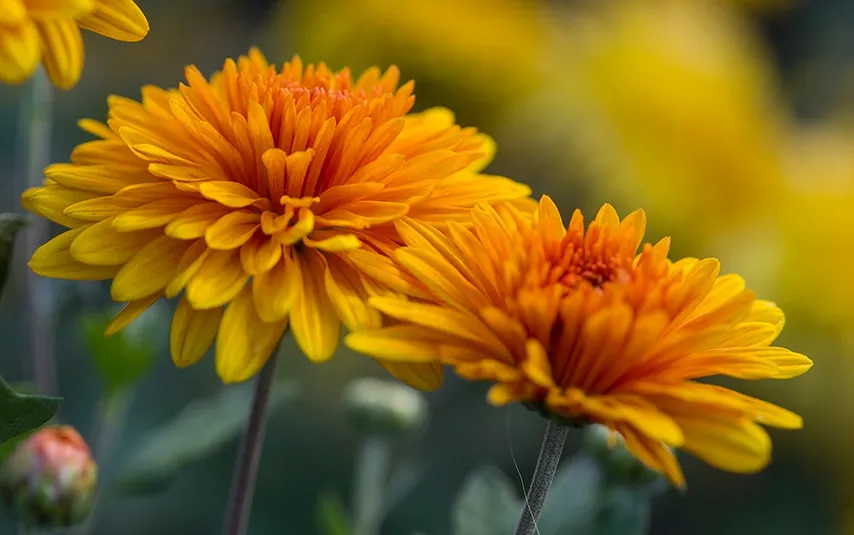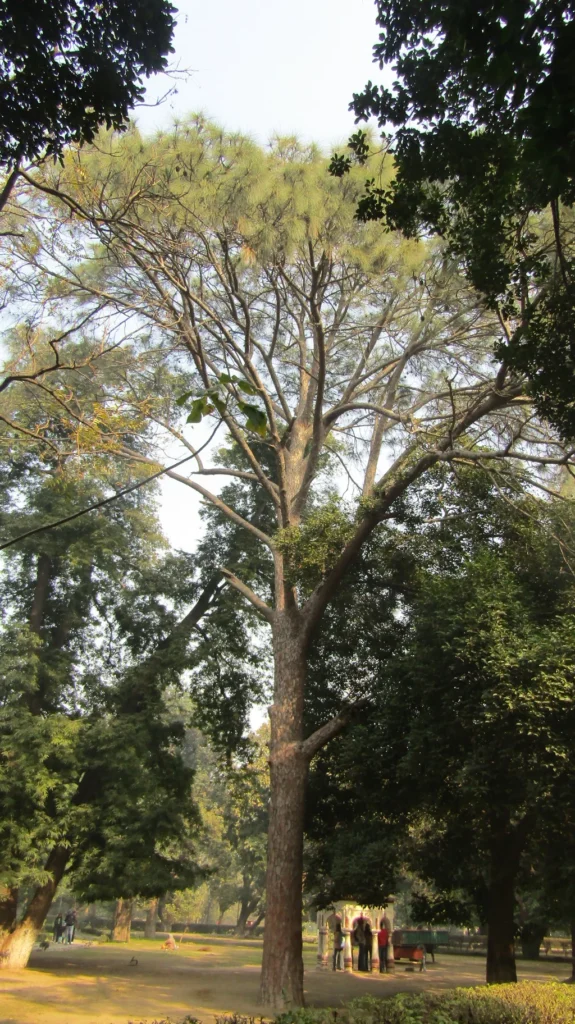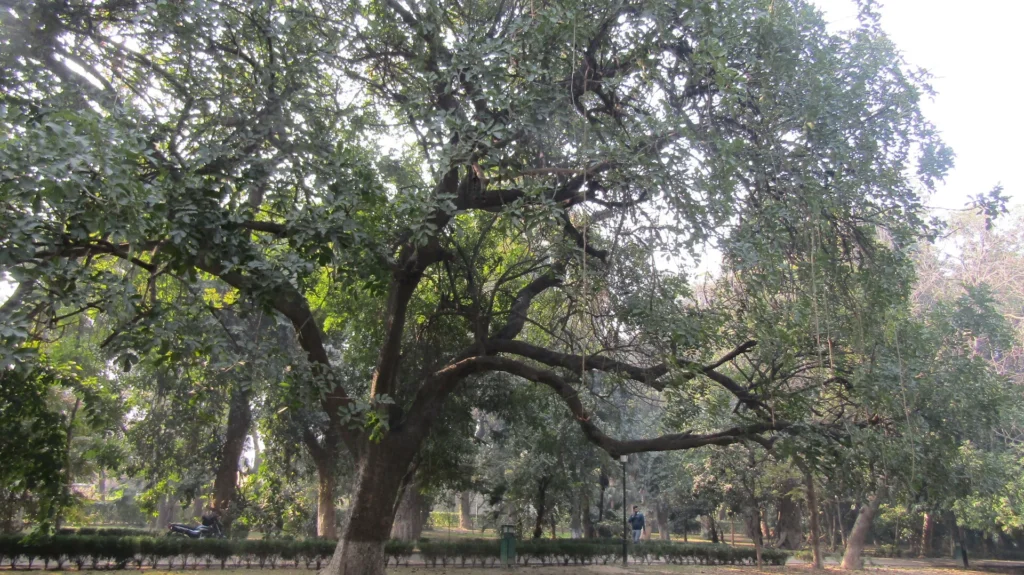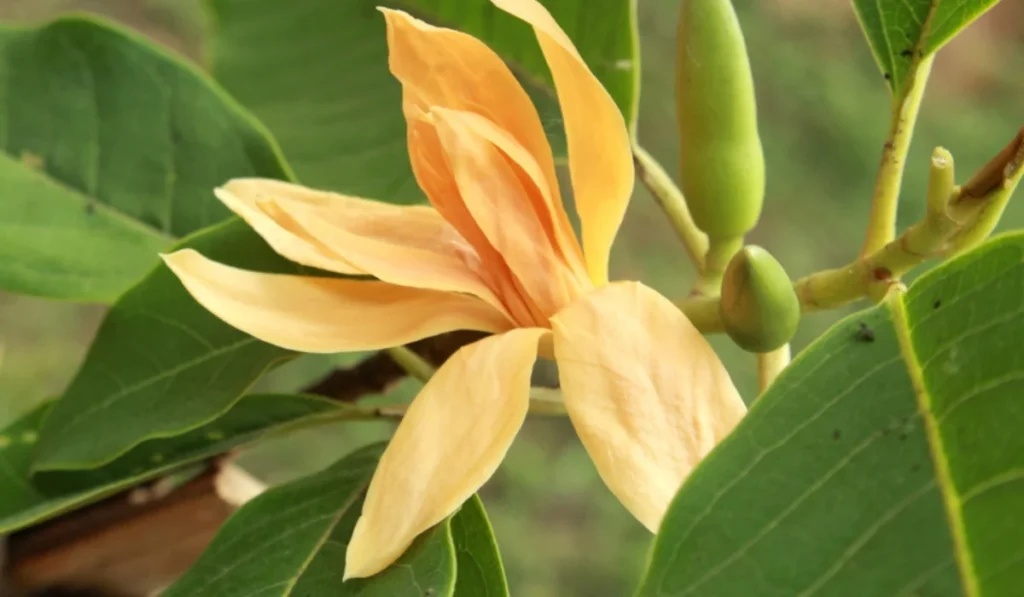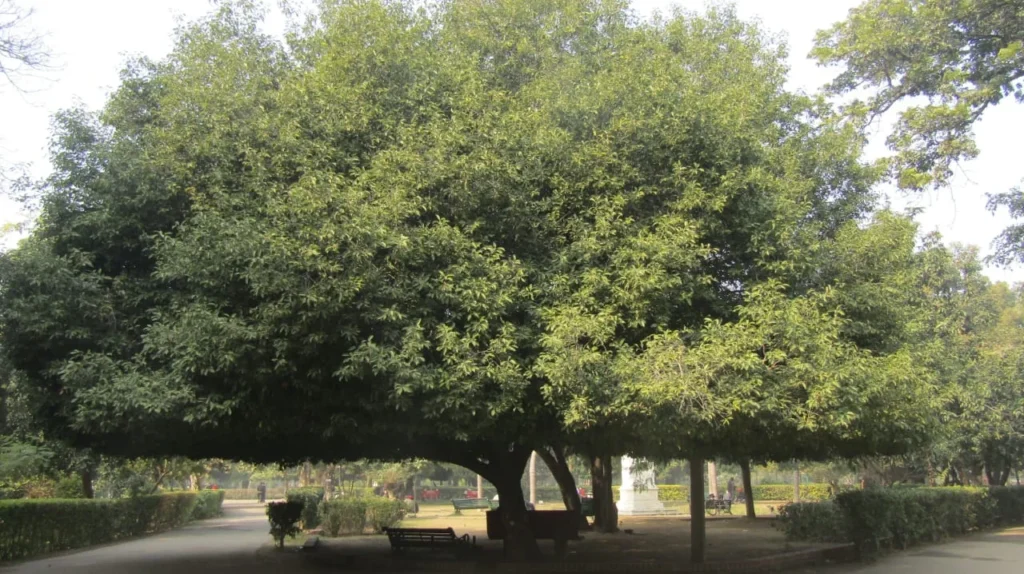The genus Chrysanthemum are perennial herbaceous flowering plants, sometimes subshrubs. The leaves are alternate, divided into leaflets and may be pinnatisect, lobed, or serrate (toothed) but rarely entire; they are connected to stalks with hairy bases.
The compound inflorescence is an array of several flower heads, or sometimes a solitary head. The head has a base covered in layers of phyllaries. The simple row of ray florets is white, yellow, or red. The disc florets are yellow. Pollen grains are approximately 34 microns.
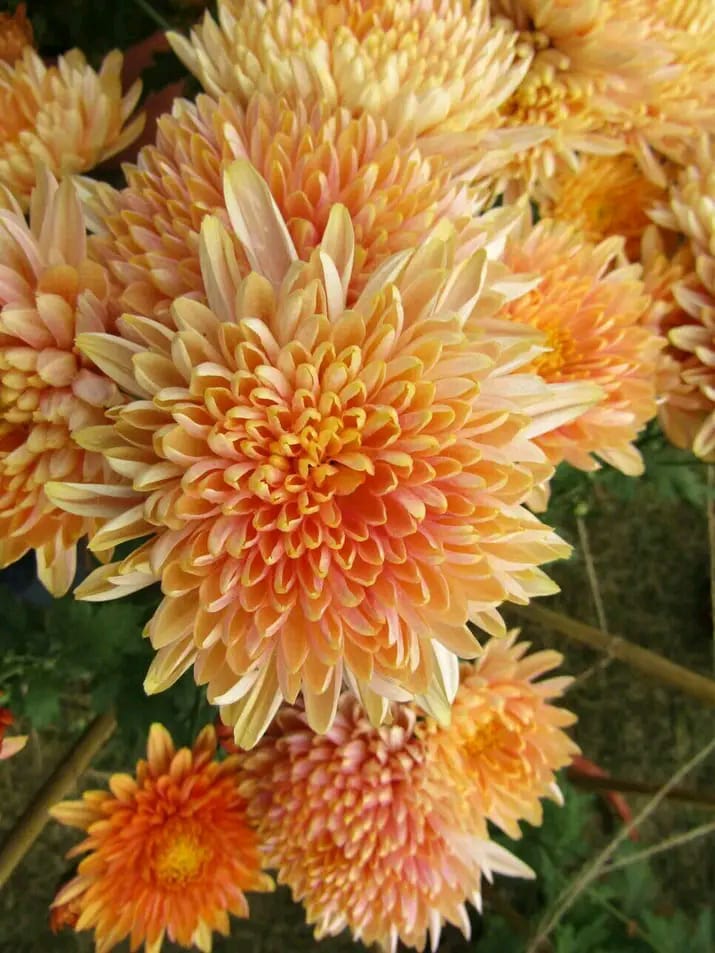
- Kingdom: Plantae
- Characteristic feature :Tracheophytes
- Type of seeds : Angiosperms
- Order: Asterales
- Family: Asteraceae
- Genus: Chrysanthemum L.
Uses
Modern cultivated chrysanthemums are usually brighter and more striking than their wild relatives. Many horticultural specimens have been bred to bear many rows of ray florets in a great variety of colors. The flower heads occur in various forms, and can be daisy-like or decorative, like pompons or buttons. In Japan, a form of bonsai chrysanthemum was developed over the centuries. The cultivated flower has a lifespan of about 5 years and can be kept in miniature size.
Yellow or white chrysanthemum flowers of the species C. morifolium are boiled to make tea in some parts of East Asia.
Pyrethrum (Chrysanthemum) is economically important as a natural source of insecticide.

